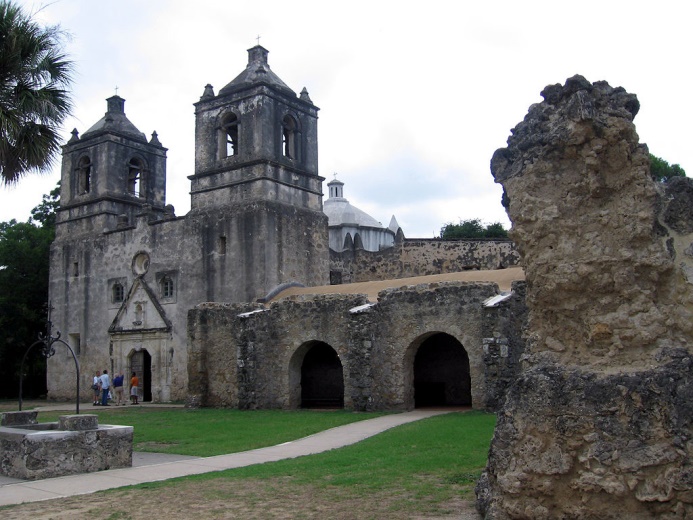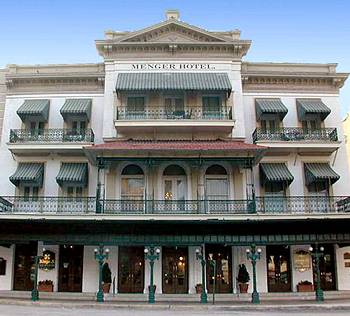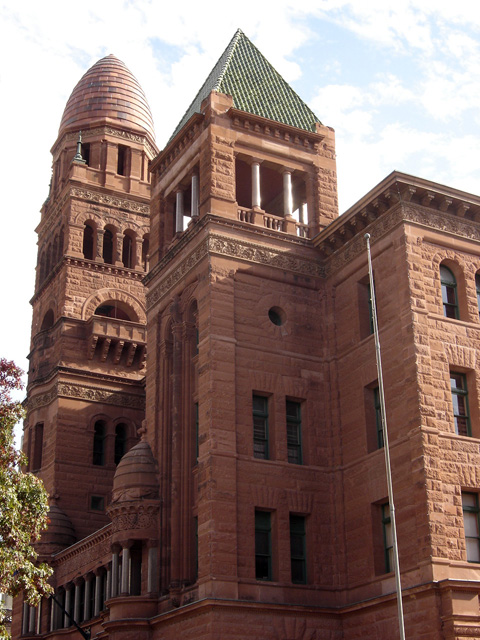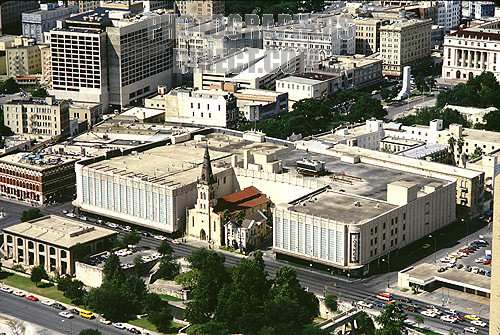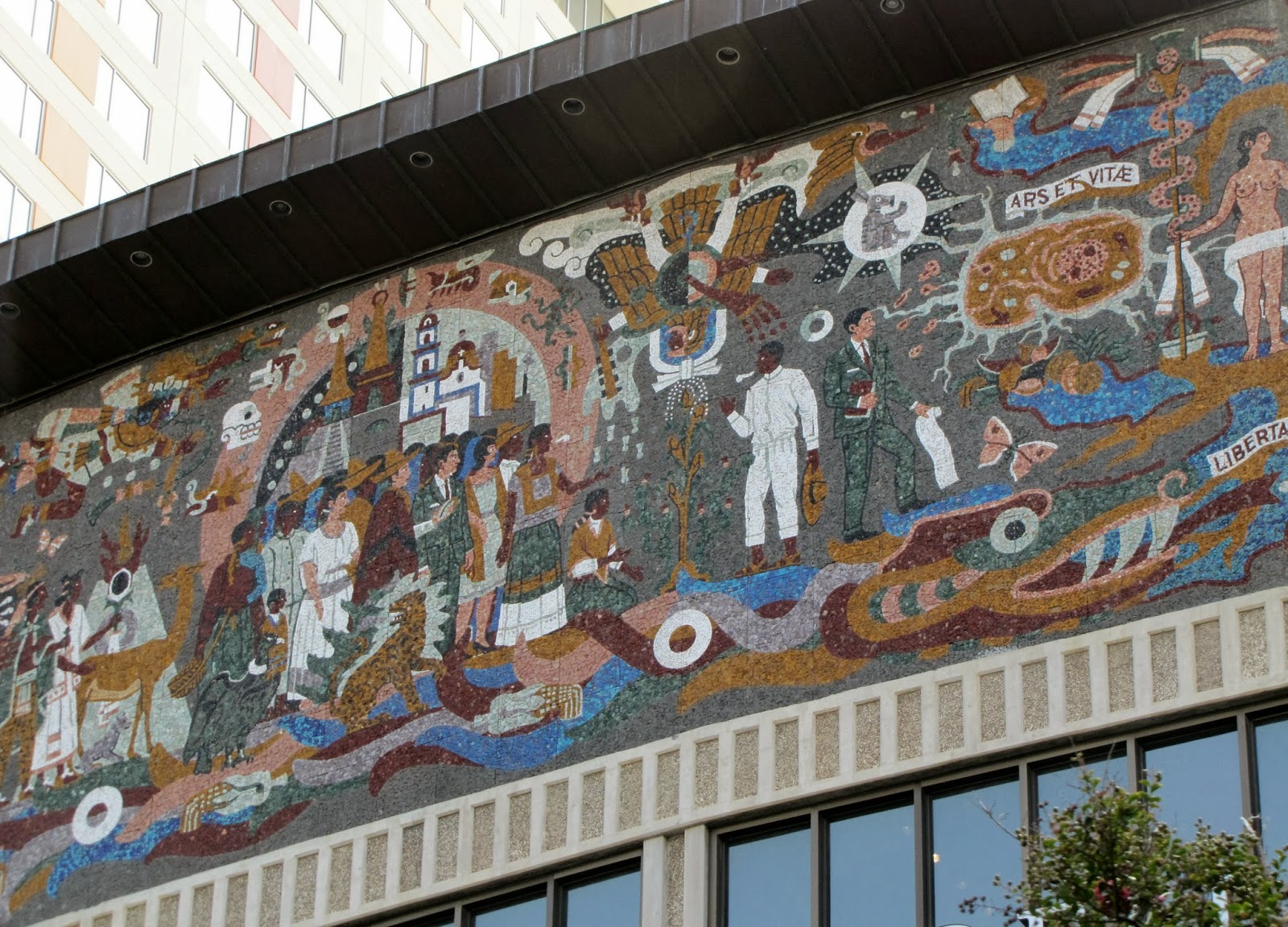|
|
LITR 5831 Seminar in World / Multicultural Literature: American Immigrant: model assignments 2014
|
|
Jonathon Anderson
7/1/2014
“Odd and antiquated foreignness”: Cultural Legacies in San Antonio
Campfires
One of the topics of discussion during our consideration of Mexican-American
immigrant stories was the ambiguity of identity that resulted from the ceding of
historically Spanish (later Mexican) territories to the United States. We
contrasted Texas to other border states, observing that the relationship between
cultures is much less contentious than in a state like Arizona. Our speculations
to account for this difference included the possibility that the growing
population of retirees in Arizona is experiencing culture shock because they did
not come from areas of the country that have such long-standing Hispanic
influence and traditions. As I continued to think about this after class, I ran
through a mental list of the names familiar to a kid who grows up in Texas,
paying closer attention to their multicultural roots: Houston, Austin, Dallas,
New Braunfels, Fredericksburg, Schulenburg, El Paso, San Jacinto, San Antonio.
We are as likely to have hot dogs and hamburgers for dinner as fajitas, tacos,
or chili. Driving down Westheimer in Houston, we are as likely to hear Tejano
music as Country music drifting through the open window of an old,
dust-encrusted Ford or Chevrolet pickup. That accordion we hear in Tejano songs?
Thank the German immigrants of the mid-1800s. (This is also reportedly the
origin of the same instrument in Zydeco, according to an
article from the
Houston Institute for Culture.) It’s not for nothing that films depicting the
border states of the Old West (that convergence of the Native American, old
Nueva España, and American Frontier) often show more than the reductive
Cowboy-Indian dichotomy. The chorus of swaggering drawl is likely to include
German or Mexican accents as well.
In many ways, the multifaceted identity of Texas (Spanish colony, Mexican
territory, independent republic, beacon for German immigration, Lone Star State)
is most vividly revealed in the City of San Antonio. Through the end of the 19th
century, the population of San Antonio consisted of roughly equal numbers of
Hispanic, German, and American inhabitants, which resulted in near-ideal
opportunities for the phenomenon we discussed in class of
acculturation, or selective assimilation over time. Although the modern
metropolitan city no longer has that demographic balance (the 2010 Census
reported the population to be 72.6% White, but only 26.6% Non-Hispanic White
according to Wikipedia),
the culture of inclusiveness seems to
remain. Recent
years have seen the addition of events celebrating Japanese pop culture and the
Hindu tradition of Diwali.
Ingredients
A large part of the rugged exoticism of the American Southwest in general, and
of Texas in particular, comes from the superimposition and blending of cultures
over the last three hundred years. The oldest city in Texas, San Antonio was
initially founded in response to the activities of colonists in “New France”
(modern day Louisiana)(Teja 25). The Misión de San Antonio de Valero, eventually
called the Alamo, was built in 1718 with the help of the Payaya Indians who
lived in the area, and by 1731 the “strangely patient courage and zeal of the
old Spanish fathers” had “converted [the Payaya] not only to nominal
Christianity, but to actual hard labor” in order to build four more “ponderous
but rudely splendid” missions (see pictures below) (Teja 26, Olmstead 154).
This was also the time of Spain’s ill-conceived notion to send four hundred
families of “unprepared…Old World peasants [from the Canary Islands]…to populate
[the] hostile Indian frontier,” although only about twelve families had arrived
before the expensive program was scrapped (Teja 27). Relations between the new
Spanish immigrants, called Isleños, and the existing community of colonial
soldiers and assimilated natives was strained by the free reign of privilege
afforded to the Isleños, who had been mythologized as “twelve families of pure
Spanish blood” by the time Frederick Law Olmstead visited San Antonio around one
hundred fifty years later. The small number of what amounted to an aristocracy,
coupled with economic necessity, eventually led to intermarriage between groups,
so that by the eve of the Mexican War of Independence beginning in 1810, San
Antonio’s population was made up “mostly of mixed blood and Indian laborers”
(Teja 28). The families who could trace their ancestry back to the Isleños,
however, persisted in considering themselves Spanish.
Following the conclusion of the Mexican War of Independence in 1821, immigration
policies encouraged settlement of Tejas, which was undertaken largely by United
States citizens, who were struggling with the rising prices of land, and German
citizens, who wanted to escape growing economic problems and overpopulation in
Germany (Oomen). By
1856, the year of Olmstead’s sojourn in the State of Texas, these three groups
(Mexican, American, and German) have established an equilibrium in which they
are experiencing “continuous firsthand contact,” but are remaining mostly
distinct (White).
Olmstead observes, “The singular composite character of the town is palpable at
the entrance” (149). He describes the German houses “of fresh square-cut blocks
of creamy-white limestone, mostly of a single story and humble proportions,” the
Mexican houses, which are “windowless cabins of stakes, plastered with mud and
roofed with river-grass, or ‘tula;’ or low, windowless, but better thatched,
houses of adobes (gray, unburnt bricks),” and the American houses that “stand
back, with galleries…and a garden picket-fence against the walk, or rise, next
door, in three-story brick to respectable city fronts” (150). Giving another
specimen of the “jumble of races, costumes, languages and buildings,” Olmstead
cites the main plaza on Commerce Street, where “American hotels, and new
glass-fronted stores, alternat[e] with sturdy battlemented Spanish walls, and
[are] confronted by the dirty, grim, old stuccoed stone cathedral.” “We have no
city, except, perhaps, New Orleans,” he compares, “that can vie, in point of the
picturesque interest that attaches to odd and antiquated foreignness, with San
Antonio.”
Saddles
This intimacy of ethnic groups, in which “each successive group of
immigrants puts its stamp upon the city, its culture, and architecture,” where
“all mingle, none quite submerging the others,” produces the peculiar
“foreignness” or exotic civic character recorded by Olmstead as well as giving
us an opportunity to see acculturation in action (Texas
State Historical Association, “San Antonio, TX”). We see, for instance,
Olmstead’s delight at the resolution of saddle choice earlier in his narrative
by the discovery of the Texan-style saddle, which, through the “merging of
cultures through prolonged contact,” combines the most useful features of both
the English-style and Mexican-style saddles he had been offered (White,
“Acculturation”). Once in San Antonio, he notices that “the old Mexican wheel of
hewn blocks of wood is still constantly in use, though supplanted, to some
extent, by Yankee wheels, sent in pairs from New York” (Olmstead 162).
The social structure seems fairly clear at first, where capital and government
offices are in the hands of the Americans, skilled labor is in the hands of the
Germans, and transport of goods is in the hands of Mexicans (160). Upon further
acquaintance with the community, however, we begin to see a blurring of groups:
“The variety of [Mexican girls’ complexions] … is naturally referred to three
sources – the old Spanish, the Creole Mexican, and the Indian, with sometimes a
suspicion of Anglo-Saxon [American] or Teuton” (161). As he begins to pay closer
attention to the physical features of the children, he ventures the comment, “we
thought the number of babies of European hair and feature exceeded the native
olive in number.” Here we can see the more relaxed attitude toward ethnic
“purity” in the “mestizo” tradition that grew out of Spanish colonialism, and we
can see the first signs of the inclusive multiculturalism that underpins the
modern city of San Antonio, which has “succeeded in merging its past into the
new in each generation” (TSHA). The result is a city where, despite growing to
become the seventh-largest city in the United States, with approximately 1.4
million residents, “old Spanish walls remain beside modern glass towers, with
rows of Victorian mansions a block away.”
Interestingly, the process of acculturation in San Antonio has maintained its
equilibrium as the world has changed around it. Developers continue to purchase
and repurpose local landmarks, like the
Alamo Quarry Market
on the north side and the old
Pearl Brewery
downtown. Projects like the renovation to the Gonzalez Convention Center take
the opportunity to pay tribute to the city’s heritage while providing aesthetic
and technological updates to the facilities. In 2013, the Bexar County Parks and
Facilities Department launched the
BiblioTech Project,
which is supposed to be the nation’s first bookless library.
Horizons
During my research, several
sidebar questions came up that could be interesting to pursue. The most relevant
to our preoccupations in this seminar is the consideration of the periodic
shifts in San Antonio’s dominant culture, since we talk about assimilation or
acculturation in reference to a dominant culture. Because of the somewhat rapid
sequence of major events before and after Mexico’s aggressive policies to
encourage the population of Tejas, a strange situation was created where the
dominant culture shifted at least two or three times in the span of a generation
or two. I wonder how it might have altered the normal flow of the immigrant
narrative. Another topic that would be interesting to follow up on would be the
cultural attitudes of the three main ethnic groups in 19th century
San Antonio and how they affected the sense of a social contract. Olmstead
spends a little time discussing the apparent disenfranchisement of the Mexican
citizens when the Anglos take over. Olmstead describes the Mexicans being
treated like minorities until their further acquaintance with the new statutes
enables them to apply to the proper bureaucratic channels, after which the
balance is basically restored.
|
|
|
|
|
|
|
|
|
|
|
|
Examples of cultural inclusiveness, accommodation and
incorporation of preexisting heritage
upper right: St. Joseph Catholic Church
Below:
Lila Cockrell
Theatre at Gonzalez Convention Center, Detail of mural
|
|
|
Works Cited
De la Teja, Jesus F. “A Spanish Borderlands Community: San Antonio.”
OAH Magazine of History 14.4 (2000):
25-28. Web. 1 Jun. 2014.
Olmstead, Frederick Law. A Journey
through Texas; or, A Saddle-trip on the South-Western Frontier (1859).
Internet Archive. The Library of
Congress, 16 Dec. 2009. Web. 1 Jul. 2014. <
https://archive.org/details/journeythroughte01olms>




